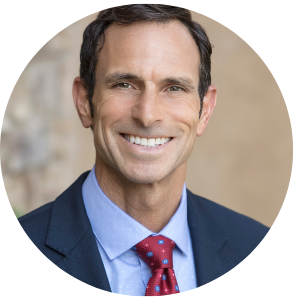Humanity, Not AI, is Essential for Student Retention
By Larry Galizio
President/ CEO of the Community College League of California
Friday, November 5, 2021
Educators are bombarded with solicitations and promotions for technological solutions to the very human challenges surrounding higher education. Bots, adaptive learning software, virtual reality, gamification, and other high-tech means are marketed as the solutions to everything from student learning and advising, to managing employees and more efficiently apportioning precious resources. Some of this technology is indeed helpful. And as one of my favorite techno-skeptics, the late Neil Postman observed in his classic, Amusing Ourselves to Death, the student who used the light from his television screen to read demonstrated the utility of that technology as a literary device.
Yet what does this have to do with the wicked problems of enrollment declines and retention challenges confronting community colleges nationwide?
As the majority of community colleges continue to experience declining enrollments and student retention challenges both pre-pandemic and within what some are referring to as “the new abnormal,” technology-based solutions are highlighted as a primary means to recruit new students and to maintain those who may have reduced their course load, stopped out, or are simply questioning whether or not they can continue pursuing higher education.
Without question, reliable broadband, Zoom, and a personal computer have become essential equipment for college-going in 2021. And some new technologies provide significant opportunities to benefit the community college mission.
Yet, I would urge administrators, policymakers, and all of us who are passionate about higher education and especially the community college mission not to neglect research demonstrating the power of human connection and face-to-face relationships and experience in engaging students pursuing higher learning. Indeed, the public health crisis will continue to create significant obstacles to in-person relationships and experiences at our institutions, however, the anomie so many are experiencing especially over the past two years arguably increases the need and even urgency for greater human connection and contact.
Although both studies I cite here are decidedly pre-pandemic, pre-Black Lives Matter, pre-January 6th, 2021, and pre-date the host of exogenous events and conditions that have roiled our political economy and culture, they reinforce fundamental elements of human nature that endure despite most external events and circumstances.
Although in different ways and with distinct research populations, both How College Works, a 2014 book by Daniel F. Chambliss and Christopher G. Takacs, and An Exploration of Tinto’s Integration Framework For Community College Students, a 2010 article by Karp, Hughes, and O’ Gara, conclude that, to quote from Chambliss and Takacs, “human contact, especially face to face, seems to have an unusual influence on what students choose to do, on the directions their careers take, and on their experience of college"; and that people matter more than programs, and relationships are central to a successful college experience.
The authors of both studies cite Tinto’s integration framework and the element of social integration. Karp et. al conclude from their qualitative work with community college students, that social integration — having a sense of belonging on campus — applies to and does affect the community college experience and is positively correlated with student persistence. The authors cite prior research questioning the utility of Tinto’s work on integration as applying to community college students and offer their findings as counter to such claims.
With the proviso that pandemic conditions were not included in this research, and that opportunities for social integration are assuredly affected by pandemic protocols, students’ lives over the past 18 months may enhance the significance of personal relationships and connections with an individual or individuals affiliated with the college.
Although Chambliss and Takacs’ longitudinal case study of students over a period approximately a decade focused on students at a small private liberal arts college, their findings are reinforced by Karp et. al.’s work with students at a public community college. The length of this piece prevents me from providing the details and nuance of the research and discussions, however How College Works offers at least two general findings early in the text that are important to retention efforts at any institution: “satisfactory personal relationships are a prerequisite for learning,” and “personal connections are often the central mechanism and daily motivators of the student experience." The authors explain that a meaningful connection and relationship with a faculty member, a member of the classified staff, a fellow student, or an advisor, can dramatically alter the perspective and student experience to a remarkably significant degree.
The severity and seriousness of our sector’s alarming and unacceptable enrollment declines will require an aggressive, multifaceted effort by community colleges and the myriad of stakeholders seeking to confront the conditions forestalling economic and social mobility for far too many Americans.
Overreliance on technological fixes belies research demonstrating that colleges creating the conditions for authentic human interactions, relational development, and personal connections with faculty, counselors, peers, staff members, and even those in administration, are more apt to achieve successful student social integration on campus and enhance the likelihood of student retention, persistence and success.
Dr. Larry Galizio serves as president and CEO of the Community College League of California.
The Roueche Center Forum is co-edited by Drs. John E. Roueche and Margaretta B. Mathis of the John E. Roueche Center for Community College Leadership, Department of Educational Leadership, College of Education, Kansas State University.

Larry Galizio is President & CEO of the Community College League of California and is a former community college CEO.
This article originally appeared in the October 14, 2021 edition of Diverse. Read it here.
Post Categories:
Empty







